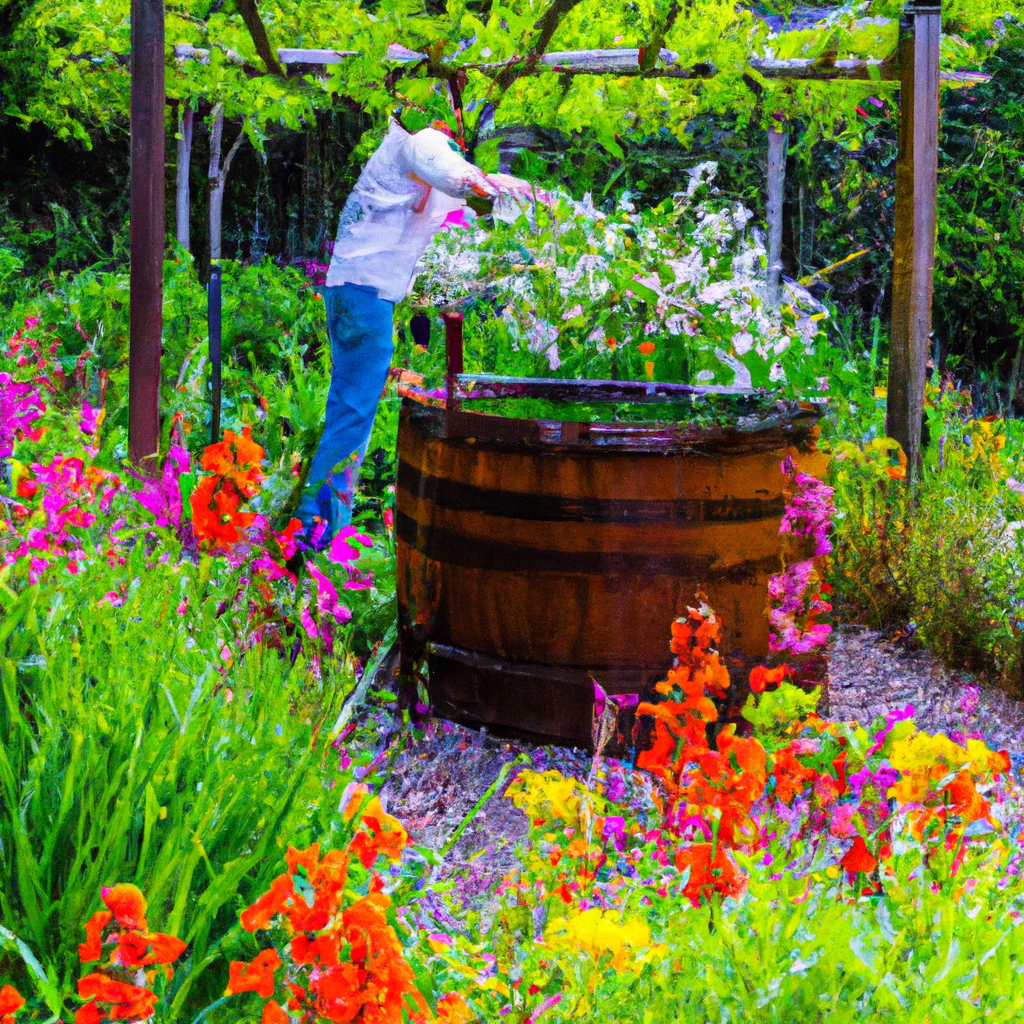Gardening is a delightful hobby that brings beauty and tranquility to our lives. However, maintaining a thriving garden can be challenging, especially in regions prone to drought. Water scarcity is a growing concern, but that doesn’t mean you have to give up on your green oasis. With the right water-saving strategies, you can still have a beautiful garden while conserving this precious resource. In this article, we will explore effective techniques to help you conquer the drought and create a flourishing garden that stands out from the competition.

Understanding the Impact of Drought on Gardens
Drought conditions can have a profound impact on the health and vitality of your garden. Plants rely on water for essential functions such as photosynthesis, nutrient uptake, and overall growth. Lack of water can lead to wilting, stunted growth, and even plant death. Moreover, water scarcity affects the entire ecosystem, disrupting the balance of biodiversity and harming beneficial insects and wildlife.
To combat these challenges and create a resilient garden, it’s crucial to adopt water-saving strategies that promote efficient irrigation and minimize water waste.
Assessing Your Garden’s Water Needs
Before diving into water-saving techniques, it’s essential to understand your garden’s specific water requirements. Different plants have varying water needs, and it’s important to choose appropriate species that are well-suited to your climate and soil conditions.
Consider conducting a thorough site analysis to identify microclimates within your garden. This will help you determine the watering needs of different areas and optimize your irrigation practices accordingly. Group plants with similar watering requirements together to ensure efficient watering and reduce water waste.
Efficient Irrigation Systems
One of the most effective ways to save water in your garden is to implement efficient irrigation systems. Traditional sprinklers often lead to water loss through evaporation and overspray. Consider upgrading to more water-efficient alternatives such as drip irrigation or soaker hoses.
Drip irrigation delivers water directly to the plant’s root zone, minimizing evaporation and ensuring efficient water uptake. Soaker hoses, on the other hand, release water slowly along their length, allowing it to seep into the soil and reach the plant roots effectively. Both these methods reduce water waste and promote healthier, more resilient plants.
Mulching for Water Conservation
Mulching is another valuable technique to conserve water in your garden. Applying a layer of organic mulch, such as wood chips or straw, helps retain soil moisture by reducing evaporation. Additionally, mulch acts as an insulating layer, protecting plants’ roots from extreme temperatures.
When mulching, ensure the layer is thick enough to provide adequate moisture retention and weed suppression. Aim for a depth of 2-4 inches, taking care to keep the mulch a few inches away from the plant stems to prevent rot.
Smart Watering Practices
In addition to efficient irrigation systems, adopting smart watering practices can further optimize water usage in your garden. Here are a few tips to consider:
- Water in the early morning or late evening to reduce evaporation.
- Adjust watering schedules based on weather conditions and seasonal changes.
- Use rainwater harvesting systems to collect and store rainwater for watering your plants.
- Regularly check for leaks or damaged irrigation equipment to minimize water loss.
- Install a rain sensor or moisture sensor to prevent overwatering.
By implementing these practices, you can ensure that your garden receives the right amount of water without wasting this valuable resource.
Choosing Drought-Tolerant Plant Species
An effective way to conserve water is to select plant species that are naturally adapted to drought conditions. Drought-tolerant plants have evolved mechanisms to survive with limited water availability, making them an excellent choice for water-wise gardens.
Consider incorporating native plants into your garden, as they are well-suited to the local climate and require minimal supplemental watering once established. Succulents, lavender, and California poppies are just a few examples of drought-tolerant plants that can add color and vibrancy to your garden while significantly reducing water consumption.
Proper Soil Management
Healthy soil is the foundation for a thriving garden, and it plays a crucial role in water conservation. Improving soil structure and fertility can enhance water-holding capacity, reduce runoff, and promote better root growth.
Amending your soil with organic matter, such as compost or well-rotted manure, can improve its ability to retain moisture. This will not only reduce the need for frequent watering but also enhance the overall health and resilience of your plants.
Conclusion
Creating a flourishing garden in the face of drought is not only possible but also essential for promoting sustainability and conserving water resources. By implementing efficient irrigation systems, mulching, smart watering practices, and selecting drought-tolerant plant species, you can conquer the challenges posed by water scarcity and nurture a garden that thrives despite the odds.
Remember, water-saving strategies are not only beneficial for your garden but also for the environment as a whole. By taking small steps towards water conservation, you contribute to a greener, more sustainable future. So, embrace these techniques, be mindful of your water usage, and let your garden become a shining example of resilience and beauty in the midst of a changing climate.
